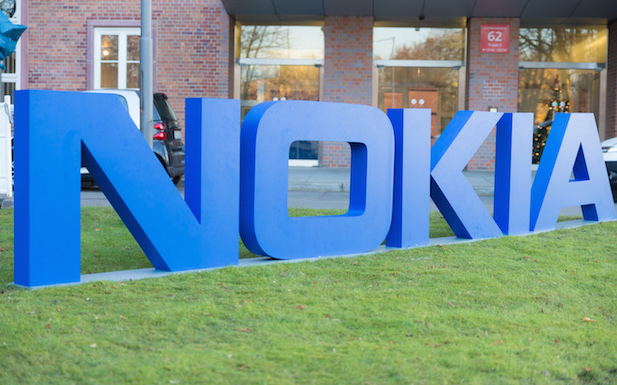Nokia is extending its services portfolio to deliver mobile, fixed and Wi-Fi connectivity and to meet the demands of data-hungry consumers, as well as launching a new mobile edge computing solution.
The vendor said it will host technologies and deliver them as a service using its AVA platform. It claimed this would reduce installation, integration and ownership costs by up to 40 percent and help operators and enterprises roll out technology faster.
Its ‘Wi-Fi Controller as a Service’ will configure, monitor and manage up to 8,000 indoor and outdoor access points, which can be scaled according to demand.
‘Optimisation as a service’ will allow operators to use the likes of Nokia’s 3D Geolocation software to ensure their network is running at peak. Data can be collected and stored through the AVA platform, which can be run through analytics and automation software.
‘Smart data as a service’ will involve Nokia tracking the performance of devices on a network, their location and the network’s conditions to determine how quality and customer perception can be improved.
Nokia also released a management service for its DSL and fibre-based broadband access products.
Each of the ‘as a service’ products will be hosted at Nokia’s data centres using its Airframe suite of products. The vendor added it will host the AVA platform at in-country facilities.
Igor Leprince, Head of Global Services at Nokia, said: “With the number of connected applications growing rapidly, XaaS models are vital to quickly bring expertise to a wide range of businesses. The extensive Nokia XaaS portfolio will allow operators and enterprises to tap our global scale and experience and capitalize on operational efficiencies while rapidly meeting subscriber demands with the quality they expect in today’s connected world.”
MVNO Euro information Telecom is one company that plans to use the new offering.
Its CTO Alexander Hayward said: “Co-creation is key in this type of service allowing us to tune the solution to our needs in a couple of weeks. Smart Data as a Service provides anyone in EIT from marketers to business analysts and network engineers an easy access to a common set of radio and core data to analytically focus on our core business added values; Marketing Campaigns, Network Operations and Subscriber Experience.”
Meanwhile, Nokia has also extended its mobile edge computing portfolio to include enterprises, so businesses can access low-latency, business critical networks.
The vendor is offering asset and personal tracking to “centimetre level” accuracy, which it said can be used to follow baggage carts, medical equipment and warehouse assets.
Another MEC-based solution is video surveillance, which Nokia said can allow security staff to access feeds from mobile devices at any time.
Finally, video analytics can be used to track security camera feeds and alert staff to any suspicious behaviour.
Nokia said it would operate these networks in partnership with operators’ licensed spectrum holdings, but plans to bring it to unlicensed spectrum in the future by using MulteFire technology.
Christian Renaud, Research Director, 451 Research said: “Nokia has created an entirely new customer market with this offer. By enabling robust local enterprise applications across secure mobile networks, Nokia will equip enterprises with a new level of accuracy and transparency in their operations, while at the same time enabling cost and operational efficiencies.”
Dirk Lindemeier, Head of Mobile Edge Computing and Wi-Fi products at Nokia, said: “Mobile Edge Computing (MEC) allows enterprises to take advantage of the latest generation LTE technology, in particular small cells, and real time applications for building complete campus networks. These networks meet the demanding privacy, resilience, and latency requirements set by business-critical applications, extending LTE to new domains.”


